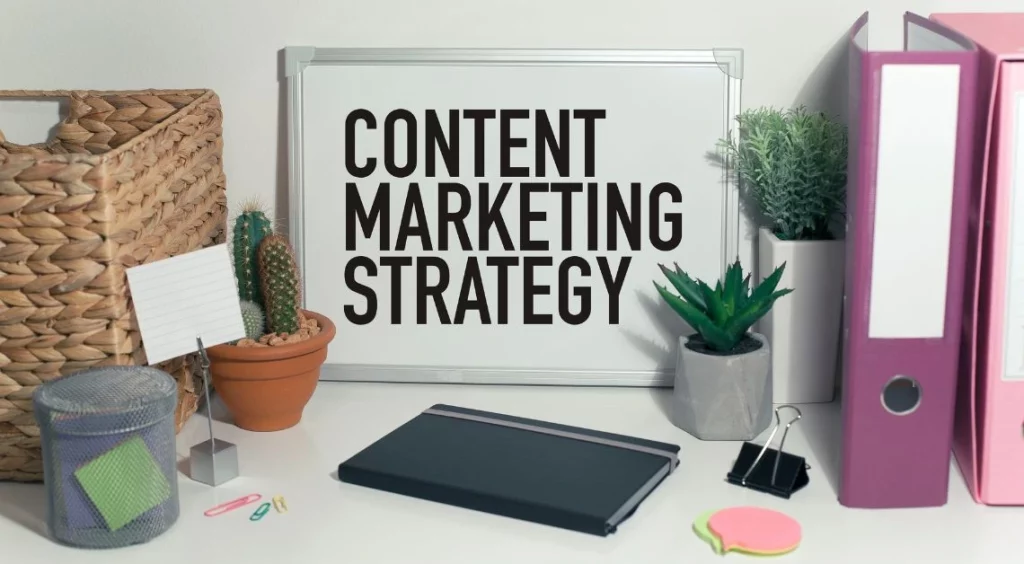Content marketing is a strategic approach focused on creating and distributing valuable, relevant, and consistent content to attract and retain a clearly-defined audience — and, ultimately, to drive profitable customer action.
When it comes to website traffic, content marketing can be an extremely effective way to drive more traffic to your site. Creating valuable and relevant content can attract more visitors to your site and encourage them to take the desired action.
There are several different ways to go about content marketing, but some of the most effective methods include creating blog posts, eBooks, infographics, and other types of informative content. Whatever type of content you create, make it interesting, informative, and relevant to your target audience.
What is content marketing?
Content marketing is a strategic approach focused on creating and distributing valuable, relevant, and consistent content to attract and retain a clearly defined audience — and, ultimately, to drive profitable customer action.
Content marketing’s purpose is to attract and retain customers by consistently creating and curating relevant and valuable content with the intention of changing or enhancing consumer behaviour. It is an ongoing process best integrated into your overall marketing strategy and focuses on owning media, not renting it.
Types of Content Marketing
Content marketing is a strategic and business process focused on creating and distributing valuable, relevant, and consistent content to attract and retain a clearly defined audience — and, ultimately, to drive profitable customer action.
There are many different types of content marketing, but some of the most common include blog posts, eBooks, infographics, case studies, how-to guides, and white papers. Each type of content serves a different purpose and can be distributed in various ways, such as through email, social media, or your website.
When creating content, it’s important to keep your audience in mind and to ensure that your content is relevant, valuable, and consistent. If you can do this, you’ll be well on your way to creating successful content marketing campaigns that will help you achieve your business goals.
What are the different types of content marketing?
- 1. Blogging
- 2. Whitepapers
- 3. Case studies
- 4. eBooks
- 5. Webinars
- 6. Podcasts
- 7. Infographics
- 8. Social media posts
- 9. Videos
1. Blogging
If you’re looking to use content marketing to promote your business, blogging is a great way to do it. But what makes a good blog post? And how can you ensure that your blog posts effectively reach your target audience and achieve your business goals?
Here are some tips for creating successful blog posts for content marketing:
1. Start with a strong headline.
Your headline should be attention-grabbing and relevant to your target audience. It should also be clear and concise so that readers know what your blog post is about before they even start reading.
2. Make sure your blog post is well-written and informative.
Your blog post should be well-written, interesting, and informative. It should provide value to your readers and help them learn something new.
3. Use images, videos, or infographics.
Images, videos, and infographics can help make your blog post more visually appealing and easy to digest. They can also help break up large blocks of text and make your blog post more engaging.
4. Promote your blog post.
Once you’ve published your blog post, promote it through your social media channels and email list. You can also reach out to influencers and ask them to share your blog post with their followers.
These tips can create successful blog posts to help you achieve your content marketing goals.
2. Whitepapers
Whitepapers are content marketing that can help establish thought leadership and provide valuable information to your target audience. When developing a whitepaper, it is important to consider what topics would be most relevant and useful to your audience and to ensure that the content is well-researched and well-written. A successful whitepaper can be a great way to generate leads and build relationships with potential customers.
3. Case studies
A case study is a research method that involves an in-depth, detailed examination of a single unit – typically a person, group, organization, event, or phenomenon. Case studies are often used in content marketing to tell a story and engage readers while providing valuable insights.
When writing a case study, it’s important to focus on the specific objectives and goals you hope to achieve. This will help you determine what information to include and how to structure your piece. Additionally, consider your audience and what they might be most interested in learning from the case study.
Once you understand your goals and audience, you can begin writing your case study. Start by providing a brief overview of the unit you’re studying, then dive into the details of the case itself. Be sure to include information on what happened, why, and the consequences.
As you write, keep your audience in mind and focus on delivering insights most useful to them. When you’re finished, proofread your work and make any necessary revisions. Then, share your case study with your audience and see how they respond!
4. eBooks
eBooks are a powerful content marketing tool that can help you to reach a wide audience with your marketing message. They can promote your brand, products or services and drive traffic to your website or blog. eBooks can be distributed free or sold on various online platforms, making them a flexible and affordable marketing solution.
5. Webinars
Webinars are a powerful content marketing tool. They’re a great way to connect with your audience, build relationships, and generate leads.
Here are a few tips to make sure your webinars are successful:
- Keep your audience in mind. Who are you trying to reach? What topics would they be interested in?
- Promote your webinars in advance. Send emails, post on social media, and send flyers to let people know about your upcoming event.
- Make sure your speakers are prepared. Please provide them with a list of questions to answer or give them an outline of what you’d like them to cover.
- Have a follow-up plan. Once the webinar is over, send out a survey to get feedback and follow up with attendees to see if they have any questions or need more information.
6. Podcasts
Podcasts are a great way to connect with potential customers and promote your brand. Here are a few tips on how to use podcasts for content marketing:
1. Use podcasts to share your brand’s story.
Your customers want to know who you are, what you stand for, and what makes you different. Share your brand’s story through a podcast and connect with your audience on a deeper level.
2. Use podcasts to educate your audience.
Share your knowledge and expertise with your audience through podcasts. Use them to educate your audience about your industry, products, or services.
3. Use podcasts to build relationships with your audience.
Podcasts are a great way to build relationships with your audience. You create a connection with your listeners when you share your story and knowledge. This connection can lead to loyalty and trust, two essential ingredients in any relationship.
4. Use podcasts to drive traffic to your website.
Make sure to include a call-to-action at the end of each podcast episode. This can be a link to your website, a landing page, or a product or service. By driving traffic to your website, your audience can learn more about your brand and what you offer.
5. Use podcasts to generate leads.
Podcasts are a great way to generate leads. By offering value to your audience, you can encourage them to sign up for your email list or contact you for more information.
6. Use podcasts to close sales.
You can use podcasts to close sales if you’re selling a product or service. Share testimonials, case studies, or success stories to show your audience how your product or service has helped others. This can be a powerful way to encourage your audience to take action and make a purchase.
7. Infographics
Infographics are a powerful tool for content marketing. By taking complex data and presenting it in a visually appealing way, infographics can help you tell a story that engages and informs your audience. Infographics can be an invaluable asset in your content marketing arsenal when used effectively.
8. Social media posts
As a business, you can use social media posts as part of your content marketing strategy to reach out to your target audience. When creating social media posts, it is important to consider the following:
- Who is your target audience?
- What message do you want to communicate?
- What call to action do you want your audience to take?
- What image or video will accompany your post?
When creating social media posts, it is also important to keep in mind the different platform algorithms. For example, Facebook favours longer and more text-based posts, while Instagram favours shorter posts that include images or videos.
By keeping these considerations in mind, you can create social media posts more likely to reach and engage your target audience.
9. Videos
A video is worth a million words, and when it comes to content marketing, it can help you get your message across and engage your audience in a way that text alone cannot. Videos can be used to promote and sell products or to share a message or story. No matter your goal, video can be a powerful tool to help you achieve it.
Conclusion:
As you can see, content marketing can be a great way to drive traffic to your website. Creating compelling, relevant, and valuable content can attract new visitors and encourage them to take action. There are many different types of content marketing, so be sure to experiment and find the best approach for you and your business. With a little effort, you can see a significant increase in traffic and engagement on your website.
FAQs about content marketing?
1. What is content marketing?
Content marketing is a strategic approach focused on creating and distributing valuable, relevant, and consistent content to attract and retain a clearly defined audience — and, ultimately, to drive profitable customer action.
2. Why is content marketing important?
Content marketing is essential because it helps businesses attract and retain customers. By creating and distributing valuable, relevant, and consistent content, companies can create a loyal and engaged customer base more likely to take action and make purchases.
3. What are the benefits of content marketing?
Content marketing has many benefits, including attracting and retaining customers, building trust and credibility, and driving sales and revenue.
4. What are some content marketing best practices?
Some content marketing best practices include creating valuable and relevant content, distributing content through multiple channels, and measuring and analyzing your results.
5. What are some common content marketing mistakes?
Some common content marketing mistakes include creating irrelevant or low-quality content, not promoting your content, and not measuring your results.



